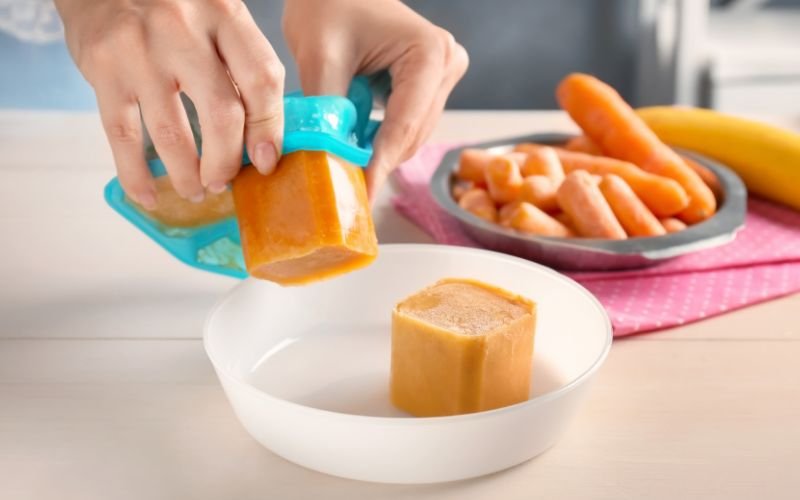Silicone molds solve common problems in the food industry like sticking, breakage, and slow production.
Silicone molds are flexible, non-stick, and heat-resistant, making them perfect for baking, candy-making, chocolate, and more. They increase production speed and product consistency.
Silicone is changing how we make food. I’ve seen it in my own projects and in client stories. It’s not just a trend. It’s a shift in how the industry works. Let’s take a look at why.
What Makes Silicone Molds Ideal for Commercial Kitchens?
Food producers face a constant struggle—speed, safety, and quality. Traditional metal molds often slow down operations and require extra work.
Silicone molds are flexible, durable, and easy to clean, making them ideal for high-volume commercial kitchens and food production lines.

In commercial kitchens, every second counts. I’ve seen pastry chefs in high-pressure environments switch to silicone molds because metal trays were slowing them down. Silicone molds cool faster, pop out the product easier, and need less prep like greasing or dusting with flour.
Here’s how silicone molds improve operations:
Benefits Comparison
| Feature | Metal Molds | Silicone Molds |
|---|---|---|
| Flexibility | Rigid | Highly Flexible |
| Non-stick Properties | Needs greasing | Naturally non-stick |
| Heat Resistance | High, but uneven | Even heat resistance up to 230°C |
| Cooling Time | Slow | Fast |
| Cleaning | Needs soaking | Easy to rinse |
These characteristics save time, reduce labor, and minimize waste. They also allow for more intricate designs without breakage.
Are Silicone Molds Safe for Food Contact?
Safety is the top concern, especially when it comes to food and babies. Many people still wonder if silicone is truly food-safe.
Food-grade silicone is non-toxic, BPA-free, and meets FDA and LFGB standards for food contact safety.

Food-grade silicone doesn’t react with food or beverages. I always tell clients: make sure the silicone is certified. At RuiYang, we follow both U.S. FDA and European LFGB standards. These are strict, and for good reason. Not all silicone on the market is safe. You have to know your supplier.
We also test for:
- BPA-free and phthalate-free status
- Odorless performance during baking
- Stability at both high and low temperatures
If you’re a brand like Little Steps Baby Care, using certified silicone is not optional—it’s mandatory.
How Do Silicone Molds Help With Product Design?
One big limitation with traditional molds is shape. With silicone, creativity becomes much easier and more cost-effective.
Silicone molds allow custom shapes, intricate details, and fast prototyping without expensive tooling.

A few months ago, I helped a bakery launch a seasonal line of Halloween chocolates. We designed bat-shaped molds in two days, made the prototypes in three, and shipped final molds in one week. Metal tooling would have taken six times as long and cost five times as much.
Why This Matters
- Shorter product development cycles
- Seasonal or limited-edition products become more viable
- Smaller businesses can afford custom molds
- Complex shapes like company logos or characters are now possible
This flexibility opens new opportunities for branding and creativity in food design.
Can Silicone Molds Withstand Industrial Use?
Some people think silicone is soft, so it must be fragile. But that’s not the case with high-quality silicone.
Industrial-grade silicone molds are built to withstand thousands of uses in baking, freezing, and dishwashing environments.
I’ve visited facilities where the same set of silicone molds was used for over two years without failure. High-quality silicone resists tearing and holds its shape. Even under repeated exposure to -40°C freezers and 220°C ovens, it performs reliably.
Look for:
- Tensile strength of 6.5 MPa or higher
- Tear resistance of 25 N/mm or more
- Wall thickness that balances flexibility with form retention
With proper care, industrial-grade silicone molds can last thousands of cycles. This lowers the cost per use compared to traditional materials.
What Are the Best Uses for Silicone Molds in the Food Industry?
From candy to casseroles, silicone is everywhere. But some areas benefit more than others.
Silicone molds are ideal for baked goods, frozen desserts, chocolates, candies, and ready-meal production.

Here’s a quick overview of where silicone shines:
| Application | Why Silicone Works Well |
|---|---|
| Chocolates | Easy de-molding, keeps shapes sharp |
| Candies | Handles sugar heat and sticky textures |
| Frozen Desserts | No cracking or sticking |
| Baked Goods | Uniform baking, easy cleanup |
| Savory Dishes | Silicone trays for microwave or oven use |
For example, we worked with a frozen dessert company that struggled with their ice cream bars sticking to the mold. After switching to custom silicone trays, their rejection rate dropped by 40%.
How Do I Choose the Right Silicone Mold Supplier?
Not all silicone molds are created equal. Choosing the right partner makes a huge difference.
Look for a supplier with food-grade certifications, customization options, quality control, and experience in the food industry.
I always advise customers to look beyond price. Ask about:
- FDA/LFGB certifications
- Production capacity and delivery times
- Design assistance for custom shapes
- Willingness to prototype
- References from other food businesses
At RuiYang, we support our clients from concept to delivery. We offer mold design, sampling, production, and logistics. We know the specific needs of baby food, confections, and bakery products. That experience matters when your deadlines are tight and your standards are high.
Click here to check custom silicone molds for details.
Conclusion
Silicone molds make food production faster, safer, and more creative—and they’re built to last.